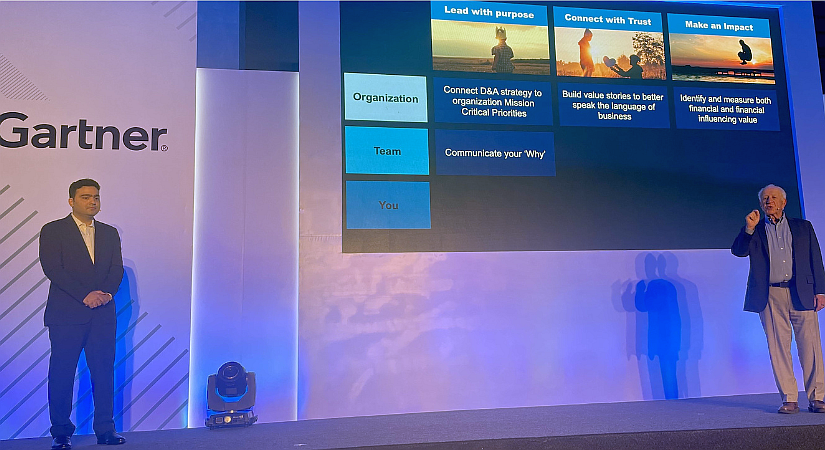It is a well-known fact that the volume of data is growing by leaps and bounds in India. The most recent trigger is the pandemic, which saw a wave of digitalization as businesses restructured their models for an increased digital presence. Today, e-commerce and retail itself generate a humongous amount of data. This August, UPI transactions in India broke all records and clocked 120% growth with 3.5 billion transactions. While this is welcome news for the economy, it presents huge data integration challenges to organizations. In the race to become data-driven, enterprises today continue to grapple with how to extract and centralize data for analysis across the company, and the majority continue to leave valuable data untapped.
According to Gartner (as cited in an Accenture report), 97% of data sits unused by organizations. Legacy on-premise technologies for operational data including enterprise resource planning (ERP) systems like SAP and Oracle databases further complicate the issue. Accenture also noted in the same report that 92% of ERP platforms require manual intervention to enable data sharing. When these ERP systems and critical business applications are centralized onto a modern data stack, global organizations can uncover deeper insights more quickly with dramatically fewer resources.
If the data cannot be collected from the various sources, aggregated in a common pool, and then pushed out to the cloud for processing, how will organizations be able to analyze this data, and glean insights for decision making?
The problem is really about data connectors, which connect the sources of data to warehouses and their destinations on the cloud. The data sources could be Google Sheets, Salesforce, ERP applications, systems of record, Facebook ads, etc. And the data warehouses on the cloud will be the destinations: Google BigQuery, Amazon AWS, Microsoft Azure, Snowflake, etc.
 Vikram Labhe, Vice President & Managing Director of Fivetran, a leading provider of automated data integration, said data is currently residing in hundreds of different sources. He said it is “painful, and expensive” for organizations to pull all of the data from those different sources and put it in a cloud warehouse for analytics.
Vikram Labhe, Vice President & Managing Director of Fivetran, a leading provider of automated data integration, said data is currently residing in hundreds of different sources. He said it is “painful, and expensive” for organizations to pull all of the data from those different sources and put it in a cloud warehouse for analytics.
“We have developed a platform product that has almost 200 connectors, which support various sources of data,” said Labhe. “We also support all the major cloud destinations and we have made this very seamless and fully automated.”
Explaining how the Fivetran product works, Labhe said a customer who wanted to do, say, data analytics, has to subscribe to Fivetran and then decide the frequency (five minutes to 24 hours) at which they want to sync the data, after choosing the data source and destination. And then they click the “Run” button on their dashboards. There are over 200 data sources to choose from and all the popular cloud destinations are mapped.
“This is fully automated with zero configuration requirements. Once you click ‘Run’ the data automatically starts synching from the source to your destination, which has your cloud warehouse,” added Labhe.
Data Integration Company
Fivetran specializes in automated data integration. It delivers ready-to-use connectors that automatically adapt as schemas and APIs change, ensuring consistent, reliable access to data. It helps companies improve the accuracy of data-driven decisions by continuously synchronizing data from source applications to any destination, allowing analysts to work with the freshest possible data. To accelerate analytics, Fivetran automates in-warehouse transformations and programmatically manages ready-to-query schemas.
Fivetran is headquartered in Oakland, California, with offices around the globe. According to Labhe, the company entered India during the formative stages of the company and incubated its Bangalore office. At one point it was a 10-person company with global operations. It set up the India engineering center five years ago to service its global operations. The product was completely designed and developed in Bengaluru where all its engineering work was done. Fivetran launched its go-to-market strategy for the Indian market early this year. It was earlier focussing on the U.S. and European markets.
We have developed a platform product that has almost 200 connectors, which support various sources of data. We also support all the major cloud destinations and we have made this very seamless and fully automated.
Acquisition and Funding
In September this year, Fivetran announced it had entered into a definitive agreement to acquire HVR, a leading provider of enterprise data replication technology. The acquisition will allow Fivetran to provide “breakthrough” database replication performance along with enterprise-grade security to address the massive market for modernizing analytics for operational data associated with ERP systems, Oracle databases, and more.
The HVR acquisition is a win-win for both companies. Fivetran customers will gain access to a broader range of high-performance data replication solutions, including HVR’s change data capture connectors and a secure, on-premise option for companies with legacy databases. HVR’s customers will have access to Fivetran’s broad range of pre-built, fully managed data connectors and transformation capabilities. The combined skills of both companies’ technical teams will enable them to offer the most robust modern data integration solution for any-sized organization.
The Fivetran customer roster includes thousands of global companies such as ASICS, Autodesk, BJ’s Restaurants, Conagra Brands, DocuSign, Forever 21, Lionsgate, Square and Ziff Davis. HVR’s customers include dozens of Fortune 500 brands.
“A bulk of our 200 connectors are API connectors. We have an engineering team that works on developing those database connectors as well. However, HVR is completely complementary from an offering perspective. They have expertise in database connectors. So this is an extremely good, complementary fit from the product offering as it immediately gives us access to all the database connectors, which they have developed over several years,. They also have customers for it, and that’s a huge motivation,” said Labhe.
But the other big benefit for Fivetran is HVR’s enterprise customer base. Fivetran’s customers are largely growth stage startups, and it wanted to make a foray into the enterprise space. That’s where HVR’s base of enterprise customers will help Fivetran. It can now cross sell its database connectors to both segments.
Fivetran also announced it has raised a $565 million Series D round, consisting of new and existing investors. Andreessen Horowitz (a16z) led the round with participation from existing investors General Catalyst, CEAS Investments, Matrix Partners, and others, along with new investors ICONIQ Capital, D1 Capital Partners and YC Continuity. Fivetran has raised $730 million to date. The company is now valued at $5.6 billion.
We asked Labhe how he plans to use the collected funds and he told us that a majority was spent on the HVR acquisition. The rest will be invested in three verticals: Engineering (adding new features to the product); marketing, and sales in new geographies. But for now the focus is on the Indian market, and it announced its India GTM strategy earlier this year.
We just launched the go-to-market strategy in India earlier this year, and so in Q4, we will have a data center.
India Go-to-Market Strategy
“With a strong market demand fuelled by the needs of India’s data-driven organizations, we expect our India business to grow rapidly over the next few years; in the last six months we are already experiencing that in some way,” said Labhe. “We have observed the prodigious growth in the adoption of data-driven cloud technologies in India. As the country transforms rapidly, sectors like banking, retail, ecommerce, insurance and digital entertainment have seen rapid and unchartered growth in data — even surpassing the global average. Today as India modernises, accelerated by the pandemic, the advent of next-generation data technology including Artificial Intelligence (AI), machine learning, IoT, Virtual and Augmented reality, and the emergence of hyperscale public cloud providers is set to reinforce the country’s trajectory and position in the global market. With the strong market demand fuelled by the needs of India’s data-driven organizations, we expect our India business to grow rapidly over the next few years. This funding and acquisition announcement positions Fivetran ideally to support our growth through strong engineering, customer support, sales and business development teams in India.”
Labhe also told us that Fivetran would partner with an Indian data center in Q4, though he declined to name the data center.
“We need the data center to process the data before we store it in the cloud warehouse of the customer. We currently have a cloud (warehouse) in Singapore, which we are using for Indian customers. However, as I said, we just launched the go-to-market strategy in India earlier this year, and so in Q4, we will have a data center,” concluded Labhe.
With inputs from a Press Release.









